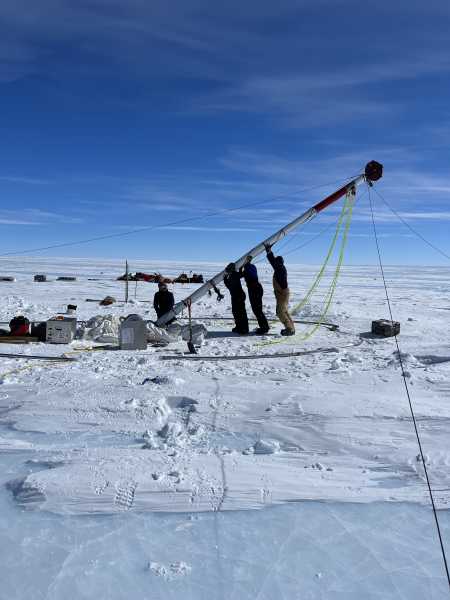
Huge waves pose a threat to marine vessels and structures. (Image credit: Denise Taylor via Getty Images)
Rogue waves have fascinated mariners and scientists for decades. They are giant, solitary waves that appear unexpectedly in the open ocean.
These mysterious giants exist for a short time, usually less than a minute, before disappearing. They can reach heights of 20 meters or more, often more than twice the height of the surrounding waves. Once considered a marine myth, rogue waves are now being recorded all over the world. Due to their height and strength, they can pose a danger to ships and offshore structures.
To rethink what rogue waves are and what causes them, I assembled an international team of researchers. Our study, published in Nature Scientific Reports, sheds light on these ocean giants using the most comprehensive data set of its kind.
We have analysed 18 years of high-frequency laser measurements at the Ekofisk oil platform in the central North Sea and come to a surprising conclusion: rogue waves are not just random phenomena. They occur in accordance with the natural laws of the sea and are not really that mysterious, but rather quite simple.
27,500 marine records
We examined almost 27,500 half-hourly wave (or sea state) records collected between 2003 and 2020 in the central North Sea. These records, recorded every 30 minutes, describe how much the sea surface has risen compared to mean sea level. They contain data on major storms such as the Andrea wave in 2007.

Complex of platforms at the Ekofisk oil field in the North Sea.
Waves are usually formed by wind blowing across the surface of the sea. This is similar to blowing on a cup of coffee, causing small ripples to form on the surface. At sea, given enough time and space, these ripples can grow into larger waves.
We focused on understanding why waves suddenly become anomalous and rise significantly above their neighbors. One theory proposed is based on modulation instability, a phenomenon described by complex mathematical models. I have previously reconsidered these models because my work shows that
Sourse: www.livescience.com





